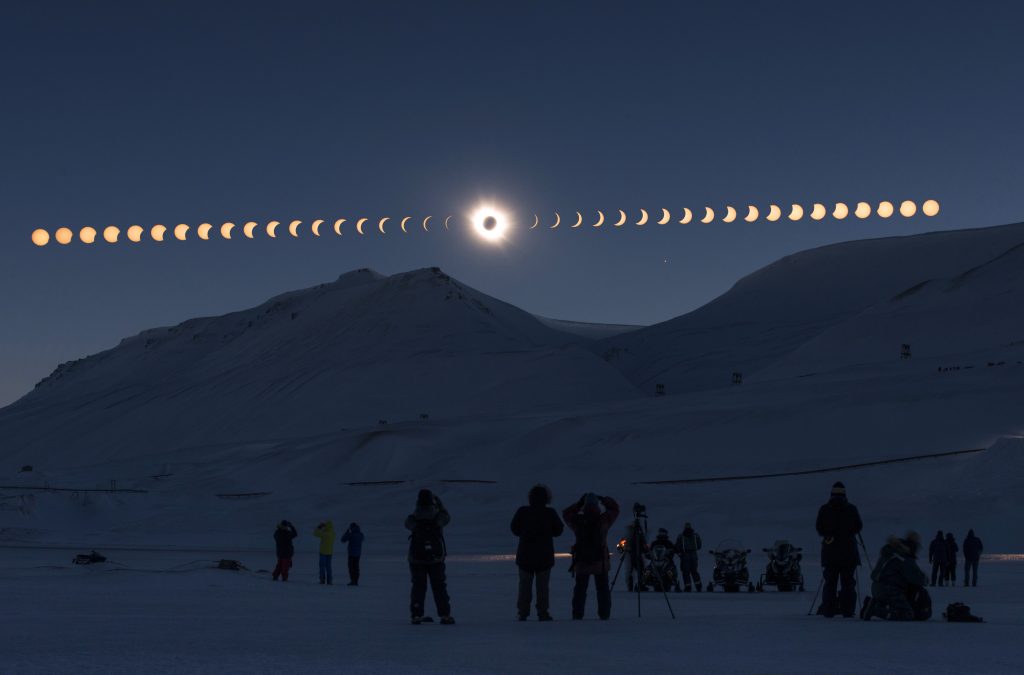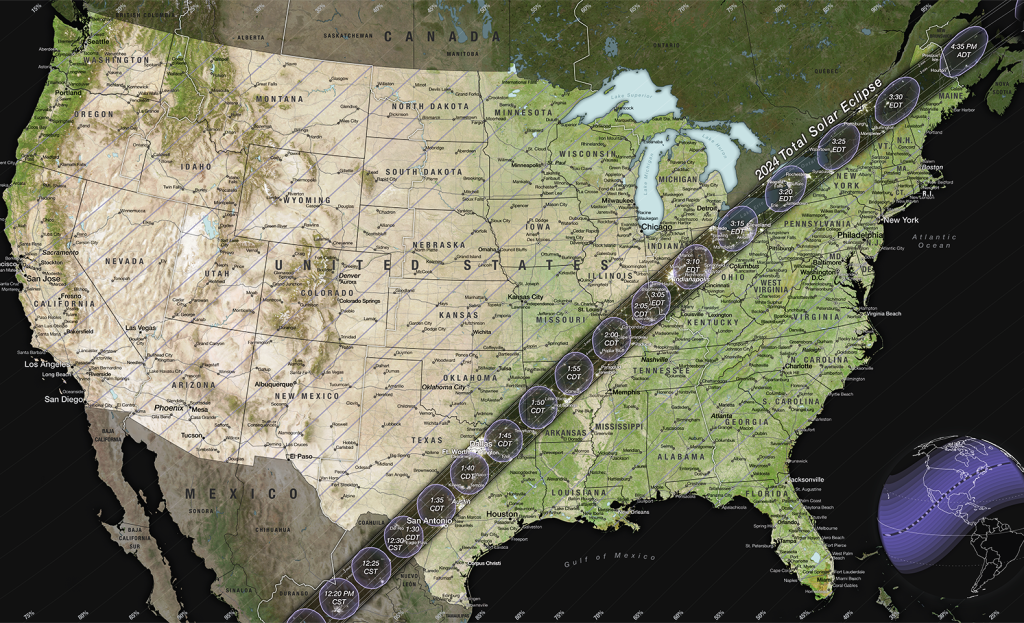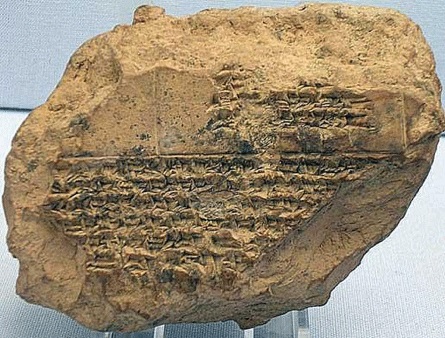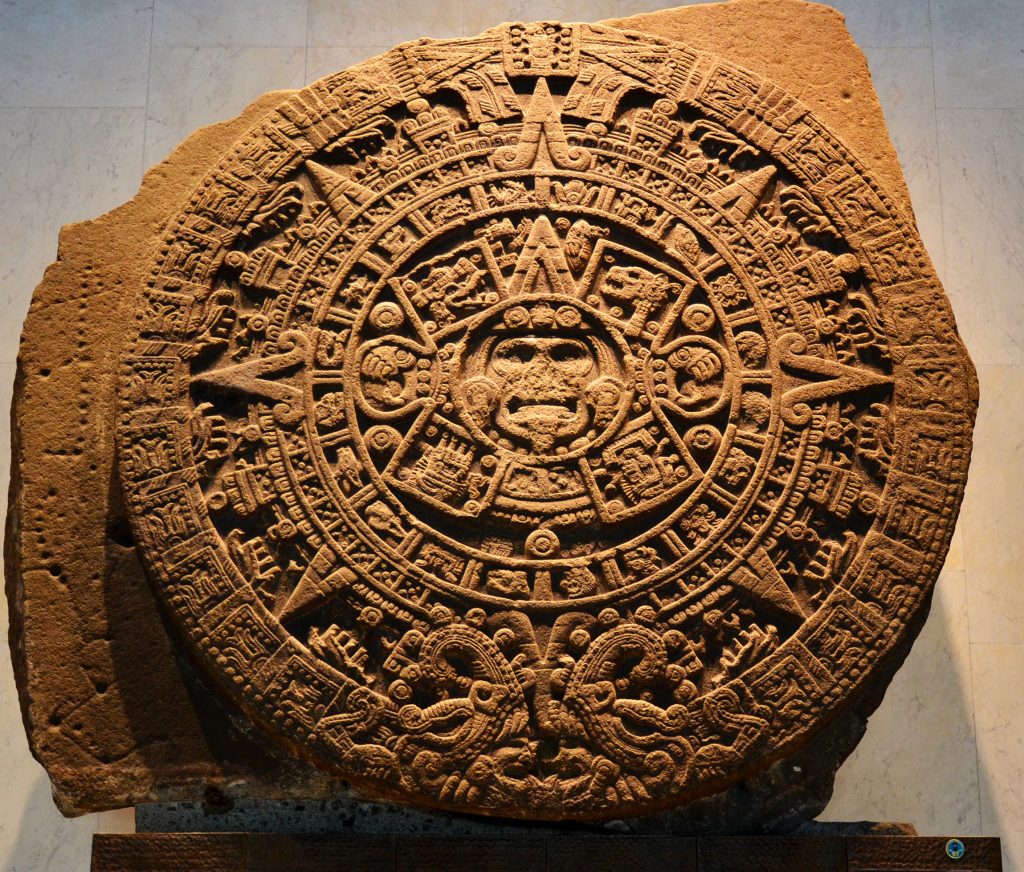
A solar eclipse in the Antarctic in December 2021. For centuries, astronomers trekked to South America, Pike’s Peak, even the middle of oceans to study eclipses. They last for a few minugtes are visible only along a narrow path. Thanakrit Santikunaporn / Shutterstock
The total solar eclipse coming to North Texas is just a month away. An event that caused fear for centuries is now greeted with rooftop parties, hotel room rentals and the price of eclipse-safe sunglasses going through the sky — just as they did in 2017.
How’d all this happen?
Yes, modern astronomy had a great deal to do with some of it. But let’s re-phrase the question.
Why were total solar eclipses scary in the first place?
Different cultures throughout history have posited that during an eclipse, something was eating the sun. It could be the moon itself or a sky dog, a dragon, a wolf, a frog, even a hungry, hungry squirrel.
Certainly, there’s visual justification for such a celestial chowdown. As the moon begins to block out the sun, it can look as though the solar disc is getting bitten off.
But if people had seen eclipses before, why would they still be scared of them? They’d know, eventually, the sun returns, shining and fine. Solar eclipses don’t even last very long — less than eight minutes, max (the record this past century was just a smidge more than seven).
But overwhelmingly the odds are that, throughout history, individuals had seen perhaps just one total solar eclipse in their lifetime — maybe two, if they were part of a migrating tribe that got lucky. Personally witnessing a total solar eclipse has been pretty rare.
And therefore pretty scary.

Official NASA map charting the path of the 2024 total eclipse. It’s been called the ‘Great North American eclipse’ because the totality (the moon’s shadow) will be visible almost entirely on the North American continent – otherwise, you’d have to be at sea. And yes, there are chartered eclipse-viewing cruises. NASA Scientific Visualization Studio / NASA
How rare? The last time North Texas got to see a total solar eclipse like the one coming this April was 1878. It’s a famous eclipse because astronomers from all over America and Europe — including amateurs like Thomas Edison — were keen to travel out West, set up camp and make observations. It was a choice opportunity.
But how scary? In Johnson County, Texas, during that same 1878 eclipse, Ephraim Miller saw the start of it and, believing the end times were coming, killed his son and himself. He feared they would otherwise be ‘left behind’ and not join the saved.
In fact, total eclipses of the sun aren’t that rare. They happen about every 18 months, much like lunar eclipses. But while lunar eclipses are more widely visible around the planet, a total solar eclipse is visible only to a tiny number of people on Earth. That’s because when the sun casts the moon’s shadow on the earth during a solar eclipse — the “totality,” as it’s called — that shadow is only around 60-70 miles wide.
So, this April 8th, only the people in a very narrow arc running from Mexico up through Texas to the far east corner of Canada will see a total eclipse. Everyone else will see only a partial eclipse or none at all.
That brief sliver of visibility is why, for years, astronomers raced around the globe just to view total solar eclipses and get in a few minutes of observation.

Babylonian tablet listing solar eclipses between 518 and 465 B.C. NASA
Obviously, ancient peoples didn’t need to have direct visual evidence of an eclipse to have heard about them and learned to fear them. A story about the sun getting swallowed tends to get around.
But that requires a level of communication between villages and peoples. After awhile, that kind of communication starts getting written down. It’s important — so you keep a record of it.
There are clay tablets from Babylon — they’re 2,500 years old, and they record solar eclipses. The Aztecs had stone calendars for much the same thing. Different cultures throughout history reached a certain point where they started keeping records. And that record-keeping became a form of security. A way of divining what was happening or going to happen.
Agrarians and hunter-gatherers already knew that what happened up in the sky — particularly the lunar cycle — was relevant to the life cycle of plants and animals down here on earth (and therefore relevant to human survival). It’s why we still know terms like “harvest moon” and “hunter’s moon.”
Ultimately, that kind of data collection leads to pattern recognition. Roughly around when those Babylonian clay tablets were written, the Greek astronomer Thales of Miletus supposedly predicted a solar eclipse. According to what scholars now believe is a legend, when that eclipse appeared in 585 B.C, it caused the Medes and the Lydians to stop their war.
Thales was an accomplished mathematician and astronomer without that particular story. But if he did date the eclipse, then he said the sun was going to go dark, predicting something no one nearby had likely seen for years — and he did this using only the data he had and his calculations.

The most famous Mesoamerican sculpture, the Aztec sun stone was buried in Mexico City as the Spanish conquest of the Aztecs began. The 25-ton stone was rediscovered in 1790. Although called a calenedar — it features the Aztec’s 260-day ritual cycle — it is actually a sacrificial altar.
That’s why science writer and sci-fi novelist Isaac Asimov declared Thales’ feat — the first time we know of a major ancient event to the single date — “the birth of modern science.”
Of course, predicting something accurately negates some of its fear and uncertainty. But it doesn’t remove all the mystery. Regardless of how much astronomy we may know, a total solar eclipse remains a spectacle unlike anything else in nature. When the moon is eclipsed, it turns dusty red, but it doesn’t disappear. When the sun is in total eclipse, we’re left with a big, black hole in the sky.
Thales predicted that, he didn’t explain it. And the rarity of that spectacle helps explain why, today, people rent rooftops and charter ocean cruises to catch a glimpse of it.
So we’ll tweak Asimov a bit: Thales’ prediction was just the start of modern science.




